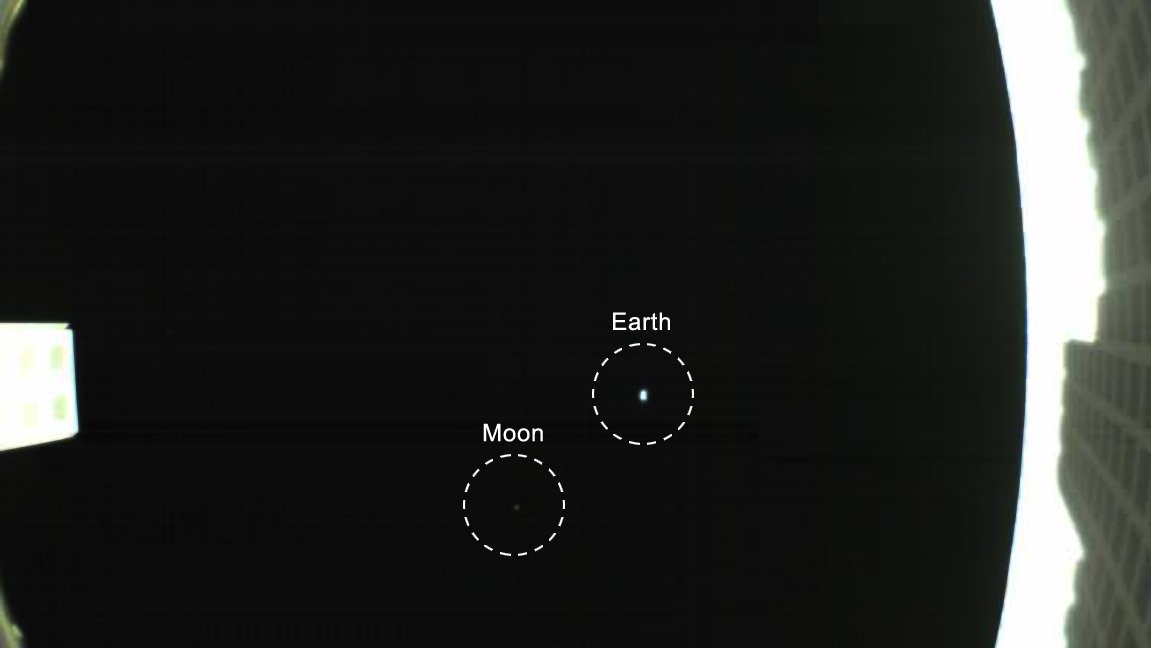Mars is one of the most studied planets in our solar system. Many think that it could be capable of supporting life which is why NASA launched its special mission known as InSight Mars on May 5, to search the Red Planet, together with the rovers, as well as check the soil and inner chemistry of the planet. Although many know that it lifted off successfully, they didn’t know that the spacecraft wasn’t alone on its journey but that it was joined by two tiny CubeSats of which one has returned a magnificent photograph of an Earth-Moon duo.
The image was taken by one of the CubeSats, known as MarCO-B or Wall-E CubeSat. The image shows Earth as a faint blue tiny dot and a little further from it the even tinier dot that represents its natural satellite, the Moon. The CubeSat used its fish-eye camera to capture the image and sent it back to Earth after the team successfully unfolded its high-gain antenna on May 9. The instrument is of critical importance for transmitting data concerning the mission back to Earth. The ground-control team had to conduct a fast image-taking test to make sure that the transmission of data was working properly.
According to NASA, the Earth-Moon duo photograph is the CubeSat version of the classic “pale blue dot” portrait of Earth which was taken from several billion miles away by Voyager 1 back in 1990.
“Consider it our homage to Voyager,” Andy Klesh, MarCO’s chief engineer at NASA’s Jet Propulsion Laboratory, said in a statement, which also shows the CubeSat photograph of the Earth-Moon duo.
NASA developed the CubeSat in order to use it in its experiment and research missions. However, now they are sitting as an important part of vast commercial missions. According to NASA, in this case, the CubeSats known as MarCO-A & B are the first ever that were developed to go toward deep space. More importantly, their launch broke the record for being the satellite that crossed the furthest distance after it passed 621,371 miles away from Earth on May 8.
“CubeSats have never gone this far into space before, so it’s a big milestone,” Klesh added. “Both our CubeSats are healthy and functioning properly. We’re looking forward to seeing them travel even farther.”
NASA is going to work on more antenna deployment tests in upcoming tests. Nevertheless, the main mission for the two satellites is to follow the InSight Mars mission to the Red Planet and in that way, demonstrate the suitability of small spacecraft traveling toward deep space.
The tiny satellites, however, won’t be the main source of communication between the lander and Earth. NASA hopes that they perform properly, as well as show a variety of technologies that will be later deployed in future missions that would include carrying transmission relays into deep space. CubeSats could collect scientific data from other planets located far away, once it’s proven that the antennas work properly and are reliable.





